Creating a DIY Gallery Wall for Small Spaces
Have you ever walked into a room that just felt alive? That’s the magic of a well-designed gallery wall! In small spaces, every inch counts, and a gallery wall can transform a dull area into a stunning focal point. The beauty of creating a gallery wall lies not just in the art itself, but in how you curate and display it. It’s like telling a story where each piece of art adds a new chapter. So, let’s dive into the art of designing a gallery wall that not only maximizes creativity but also maintains a stylish and organized look!
Before you start hammering away, take a moment to choose the right wall. This decision can make or break your gallery wall experience. Look for a wall that has good lighting; natural light can make your artwork pop, while dim lighting might leave it looking drab. Also, consider the visibility of the wall. Is it in a high-traffic area where guests will admire it? Or is it tucked away in a corner? The overall aesthetic of the room plays a crucial role too. A gallery wall should complement your existing decor, creating a harmonious flow throughout the space.
Now comes the fun part—gathering your artwork! Think of this as a treasure hunt where you’re on the lookout for pieces that resonate with you. You want a mix of mediums, styles, and sizes to create visual interest. Imagine combining a vibrant abstract painting with a vintage print and a few personal photographs. This eclectic mix can reflect your personality and taste, making your gallery wall uniquely yours. Don’t shy away from exploring different sources; thrift shops, local artists, or even your own photography can provide fantastic options.
Combining various art styles is like mixing different flavors in a dish to create a culinary masterpiece. You can blend contemporary pieces with vintage finds and abstract art to add depth and character to your gallery wall. This contrast not only keeps the eye moving but also invites conversation. Picture a sleek, modern print sitting next to a rustic frame filled with a nostalgic family photo. The juxtaposition can create a dynamic visual experience that captures attention.
Speaking of personal touches, don’t forget to incorporate personal photographs! These images can create a warm and inviting atmosphere, making your gallery wall feel like home. Choose meaningful pictures that resonate with you—perhaps a snapshot from a memorable vacation or a candid moment with loved ones. When blended seamlessly with your chosen artwork, these photos can evoke emotions and tell a story that’s uniquely yours.
Frames are not just protective barriers; they can significantly impact the overall presentation of your gallery wall. Think of frames as the jewelry that enhances your artwork. Consider mixing frame styles, colors, and sizes to create an eclectic yet harmonious arrangement. A rustic wooden frame can beautifully contrast with a sleek black frame, creating an inviting visual rhythm. Play around with arrangements before committing to nail placement; it’s all about finding the right balance!
The arrangement of your artwork is key to a successful gallery wall. Before you start nailing things up, try laying out your pieces on the floor. This allows you to experiment with different layouts without making any permanent decisions. Aim for a balanced look that draws the eye across the wall. You can create a grid pattern for a more structured feel or an organic layout for a relaxed vibe. Remember, there’s no right or wrong way—just what feels good to you!
Accessories can elevate your gallery wall to the next level. Think about incorporating shelves, plants, or decorative items to create a layered and inviting display. A small potted plant can bring life to your wall, while a decorative shelf can provide a place for books or trinkets. The key is to create a cohesive look that complements your artwork while adding dimension to the overall display.
Never underestimate the power of lighting! Proper lighting can dramatically enhance the visual impact of your gallery wall. Consider using spotlights or wall sconces to highlight your favorite pieces effectively. You can also experiment with different lighting angles to see how they change the mood of your display. A well-lit gallery wall is like a stage where your art gets the spotlight it deserves.
Once your gallery wall is up, regular maintenance is essential to keep it looking fresh. Dust frames periodically to avoid a dull appearance, rotate artwork to keep things interesting, and update pieces as your taste evolves. Think of it as tending to a garden; with a little care, your gallery wall will continue to bloom and thrive.
Q: How do I choose the right size for my gallery wall?
A: Consider the wall space available and the size of the artwork. A good rule of thumb is to cover about 60-75% of the wall space.
Q: Can I use different frame styles?
A: Absolutely! Mixing frame styles can add character and interest to your gallery wall.
Q: How do I maintain my gallery wall?
A: Regularly dust your frames, rotate artwork, and update pieces to keep your display vibrant.
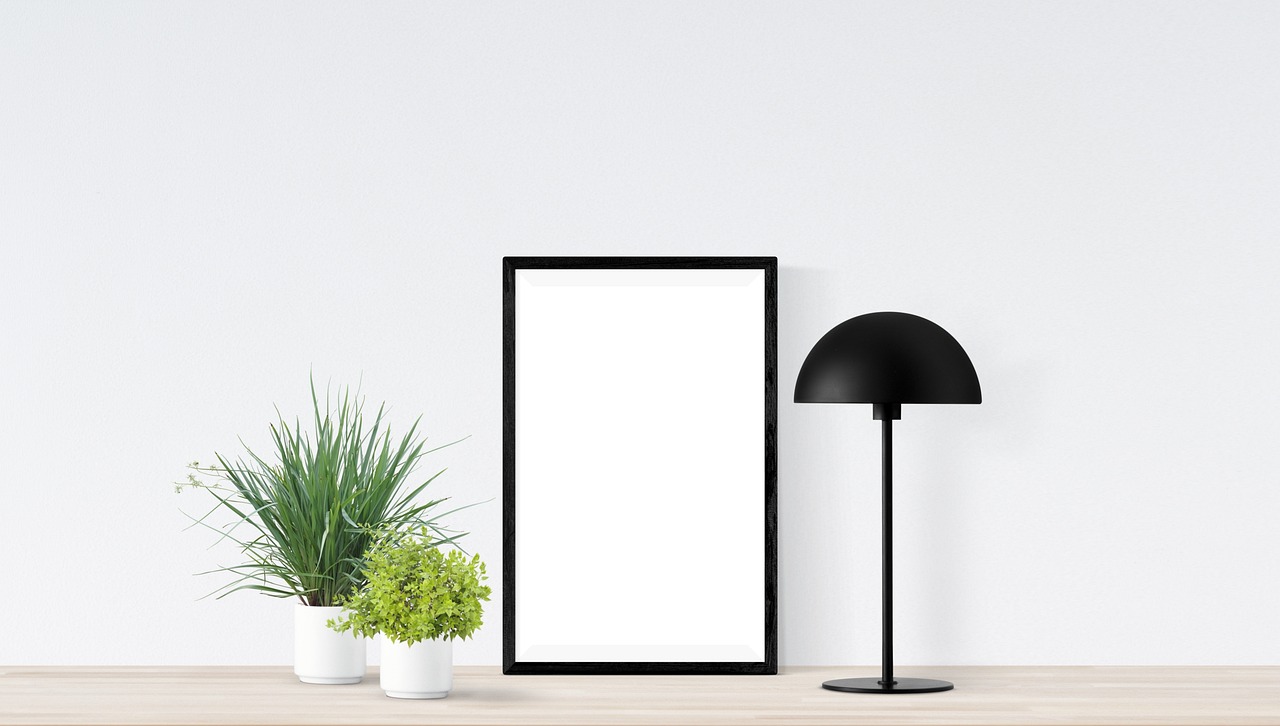
Choosing the Right Wall
When it comes to creating a stunning gallery wall, the first step is selecting the right wall. This might seem like a straightforward task, but it’s crucial to consider several factors that can dramatically affect the overall impact of your gallery. Think of your wall as a canvas; the better the canvas, the more beautiful the masterpiece. Start by assessing the lighting in the area. Natural light can highlight your artwork beautifully, but too much direct sunlight might cause fading over time. If you have a wall that receives soft, diffused light, that could be the perfect spot for your gallery.
Next, consider visibility. A gallery wall should be a focal point in your room, so choose a space that is easily seen by guests and family alike. Think about high-traffic areas like living rooms or hallways, where your art can be appreciated daily. You want your gallery to spark conversations and admiration, so placing it where people naturally gather will enhance its effectiveness.
Another important aspect is the overall aesthetic of the room. Your gallery wall should complement the existing decor rather than clash with it. For instance, if your room is filled with modern furniture and sleek lines, consider a gallery wall that reflects that style. Alternatively, a rustic space might benefit from vintage frames and eclectic art pieces. The goal is to create a cohesive look that feels intentional and well thought out.
To help you visualize the perfect wall, here’s a quick checklist of what to consider:
- Lighting: Is the wall well-lit, or does it receive too much direct sunlight?
- Visibility: Is the wall in a high-traffic area where it can be appreciated?
- Aesthetic Compatibility: Does the wall's style match the overall decor of the room?
By carefully selecting the right wall, you set the stage for a gallery that not only showcases your art but also enhances the beauty of your space. Remember, the wall is more than just a backdrop; it’s an integral part of your gallery experience. So take your time, explore different options, and choose wisely!
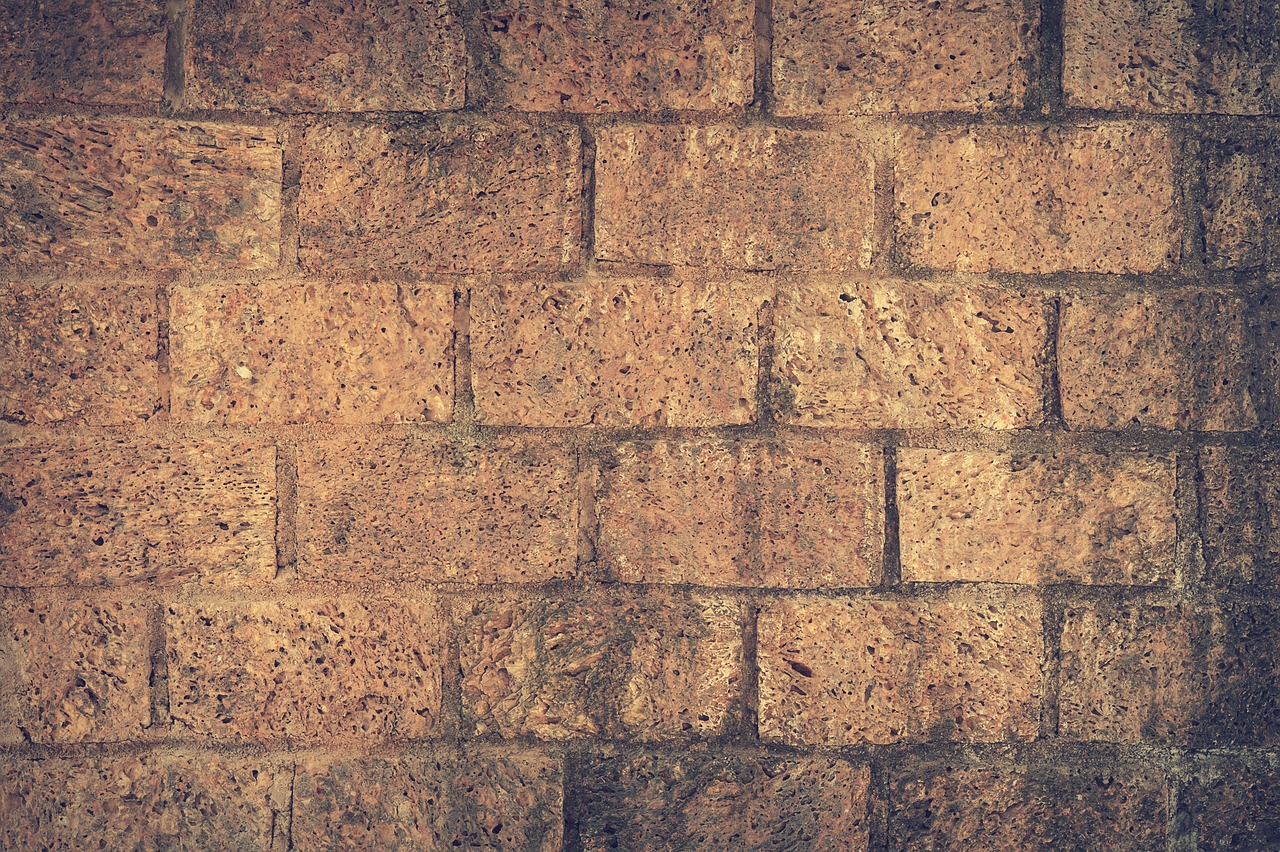
Gathering Your Artwork
When it comes to creating a stunning gallery wall, the first step is . This is where the magic begins! Think of your gallery wall as a canvas waiting to be filled with your personality and style. The beauty of a gallery wall lies in its ability to showcase a variety of pieces that tell your unique story. So, how do you start collecting? Well, first, you want to explore different mediums, styles, and sizes. This diversity not only adds visual interest but also creates a conversation piece in your space.
Consider incorporating artwork that resonates with you. This could be anything from paintings and prints to sculptures and textiles. Each piece you choose should reflect a part of you, almost like a visual diary. For instance, if you love nature, why not include some botanical prints alongside a few abstract pieces that capture your imagination? The goal is to create a dynamic display that feels cohesive yet eclectic.
As you gather your artwork, keep in mind the scale and proportion of each piece. Mixing large and small items can create a balanced look, but be careful not to overcrowd your wall. A good rule of thumb is to start with a few larger pieces as your anchors and then fill in with smaller works. This way, your gallery wall won’t feel chaotic but rather like a curated collection. You might even consider creating a mood board to visualize how different pieces will work together.
Don’t forget to include personal photos! These can add a warm, inviting touch to your gallery wall. Choose images that hold special memories or represent significant moments in your life. When blended with your chosen artwork, these personal touches can create a sense of nostalgia and intimacy. It’s like inviting guests to take a peek into your life through art!
Lastly, think about the color palette of your artwork. While it’s great to mix styles, having a cohesive color scheme can tie everything together beautifully. You might opt for a monochromatic theme with different shades of a single color, or you could go for a more vibrant approach with contrasting colors that pop against the wall. Whatever you choose, make sure it aligns with the overall aesthetic of your space.
| Art Medium | Examples | Impact |
|---|---|---|
| Paintings | Oil, Acrylic, Watercolor | Adds depth and texture |
| Prints | Photography, Digital Art | Creates a modern feel |
| Sculptures | Metal, Wood, Clay | Introduces dimension |
| Textiles | Fabric Art, Tapestries | Brings warmth and softness |
In conclusion, gathering your artwork is about more than just selecting pieces; it's about curating a collection that reflects who you are. Take your time, explore various styles, and don’t hesitate to mix things up. After all, your gallery wall should be a true reflection of your creativity and personality!

Mixing Art Styles
When it comes to creating a stunning gallery wall, one of the most exciting aspects is the opportunity to mix art styles. Imagine walking into a room where modern abstract pieces dance alongside vintage photographs, creating a visual symphony that captures the essence of your personality. Mixing styles isn’t just about throwing different pieces together; it’s about creating a cohesive narrative that speaks to who you are. Think of your gallery wall as a storybook of your tastes and experiences, each piece contributing a unique chapter.
To achieve this artistic blend, start by considering the color palette of your room. This will help guide your choices and ensure that the styles complement rather than clash. For instance, if your room has a neutral base, you might want to introduce vibrant contemporary art that pops against the walls. On the other hand, if your space is already rich in color, opt for more subdued vintage pieces that can add depth without overwhelming the senses.
As you gather your pieces, aim for a variety of mediums—think paintings, prints, textiles, and even sculptures. Each medium brings its own texture and dimension to the wall, making the display more engaging. For example, a large canvas painting can serve as an anchor, while smaller framed prints and a few three-dimensional elements can create a sense of movement and flow. Don’t be afraid to experiment; sometimes the most unexpected combinations yield the most stunning results.
Also, consider the scale of your pieces. Mixing large and small artworks can create a dynamic visual rhythm. A large abstract painting can be flanked by smaller, framed photographs or prints, creating a balanced yet eclectic look. You might even find that layering smaller pieces over a larger one adds an intriguing depth to your display.
Finally, remember that personal connection is key. Choose pieces that resonate with you—whether they evoke cherished memories or simply make you smile. This emotional connection will shine through and make your gallery wall feel genuinely unique. In essence, mixing art styles is not just about aesthetics; it’s about creating a space that reflects your individuality and invites conversation.
- How do I choose the right art styles to mix? Consider your personal taste and the overall aesthetic of the room. Look for pieces that share a common color palette or theme.
- Can I mix different frame styles? Absolutely! Mixing frames can add character and interest to your gallery wall. Just ensure they complement each other in some way.
- What if I’m not sure how to arrange the pieces? Lay the pieces out on the floor first to experiment with different arrangements before hanging them on the wall.
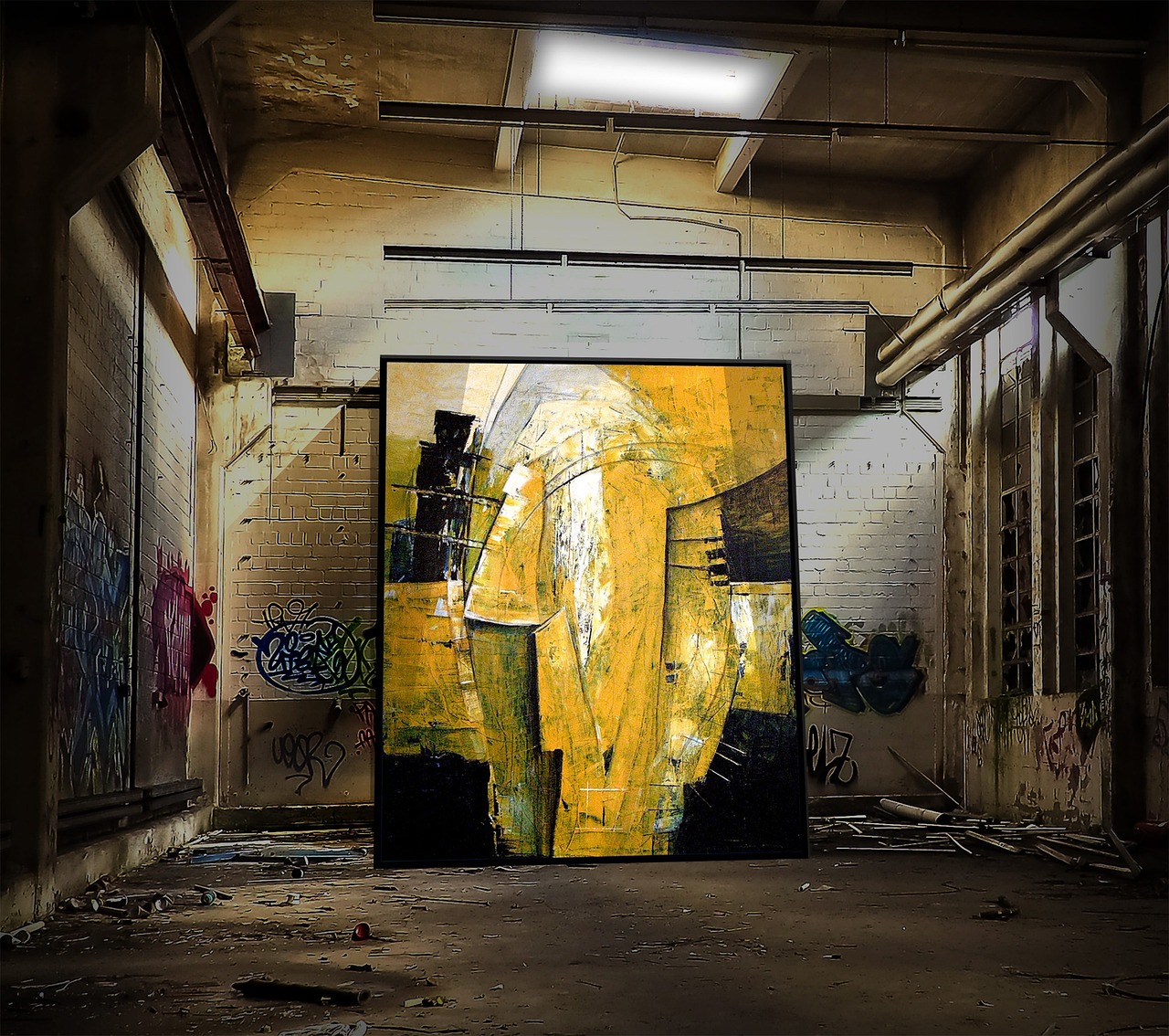
Incorporating Personal Photos
When it comes to creating a gallery wall, personal photos can serve as the heart and soul of your display. These images tell your unique story, capturing moments that resonate deeply with you. Imagine walking into a room and being greeted by smiling faces, cherished memories, and snapshots of adventures that make your heart skip a beat. Personal photos not only add a touch of warmth but also invite conversation and nostalgia, making your space feel truly like home.
To truly make your gallery wall a reflection of your life, consider selecting meaningful images that evoke emotions or memories. Here are some ideas to get you started:
- Family gatherings that bring back fond memories.
- Travel photos that whisk you away to far-off places.
- Snapshots of milestones, like graduations or weddings.
- Everyday moments that capture the essence of your life.
When incorporating these photos, think about how they will blend with your chosen artwork. You want the personal elements to complement rather than clash with the art styles you’ve selected. A great way to achieve this is by using consistent framing for both your personal photos and your artwork. This creates a cohesive look while allowing the different pieces to shine in their own right. For example, if you choose a modern black frame for your artwork, consider using the same style for your photos. Alternatively, you could mix it up by using a variety of frames that share a common color palette, adding a layer of visual interest without losing harmony.
Another fantastic technique is to arrange your personal photos in a way that tells a story. You might group them by theme or chronologically, allowing viewers to journey through your memories. This not only enhances the aesthetic appeal but also invites guests to engage with your gallery wall on a deeper level. Remember, the goal is to create a space that feels inviting and personal, making it a conversation starter for anyone who enters the room.
Lastly, don’t forget about the size and scale of your personal photos. Mixing different sizes can create a dynamic look, but be mindful of balance. A large statement photo can anchor the arrangement, while smaller images can fill in the gaps, creating a visually pleasing layout. By thoughtfully incorporating personal photos, you’ll not only enhance the beauty of your gallery wall but also create a space that feels uniquely yours.
Q1: How can I choose the best personal photos for my gallery wall?
A: Select photos that evoke strong emotions or memories. Consider a mix of family, travel, and everyday moments to create a narrative that reflects your life.
Q2: Should I use the same frame for all my personal photos?
A: While using the same frame can create a cohesive look, mixing different frames can add visual interest. Just ensure they share a common color palette or style.
Q3: How can I arrange my personal photos on the gallery wall?
A: You can arrange them by theme, chronologically, or create a visual flow. Experiment with layouts on the floor before committing to the wall.
Q4: Can I mix personal photos with artwork?
A: Absolutely! Mixing personal photos with artwork can create a rich and dynamic gallery wall. Just ensure that they complement each other in style and color.
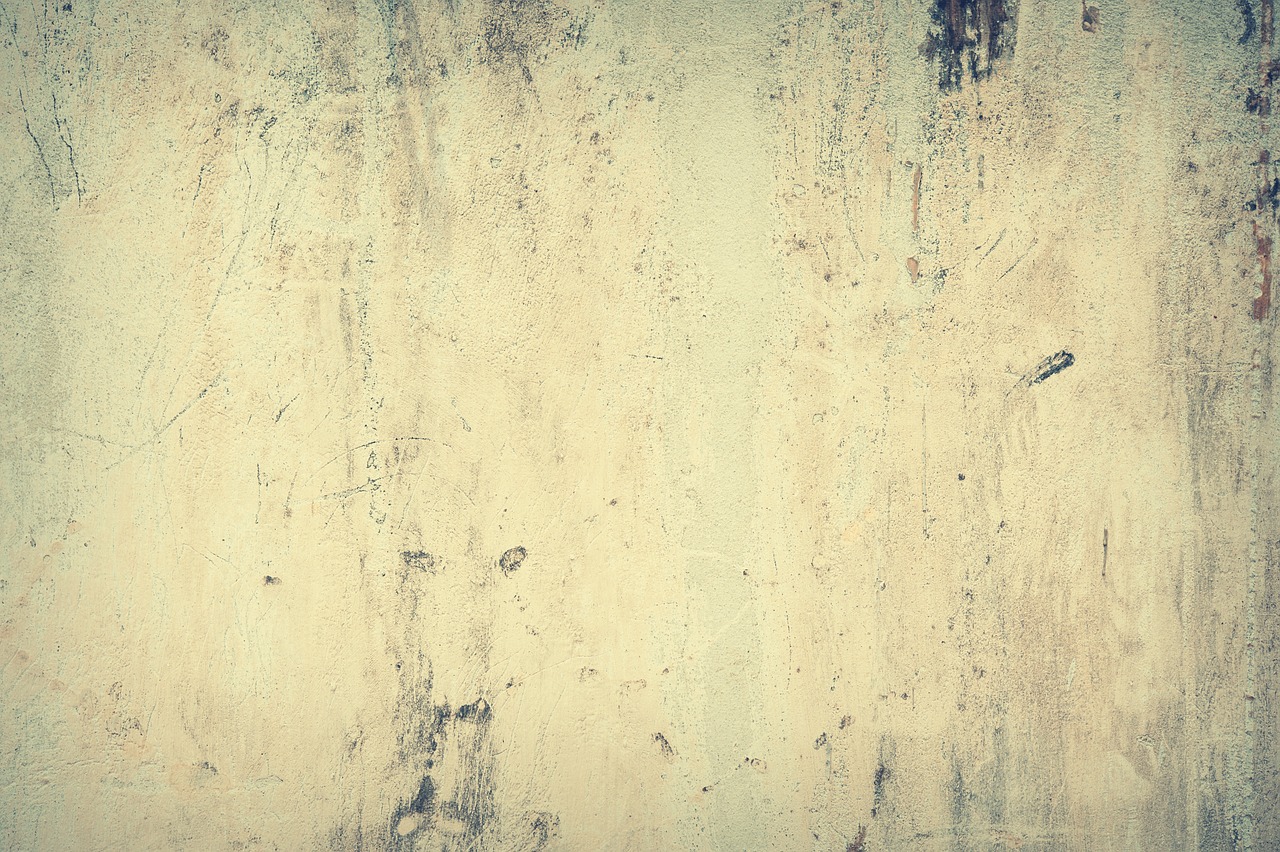
Using Frames Creatively
When it comes to designing your gallery wall, frames are more than just a boundary for your artwork; they are the unsung heroes that can elevate your display from mundane to extraordinary. Imagine walking into a room where each piece of art is not only a reflection of your personality but also framed in a way that enhances its beauty. The right frame can transform an ordinary piece into a stunning focal point, much like a beautiful dress can turn heads at a party.
One of the most exciting aspects of using frames creatively is the opportunity to mix and match different styles, colors, and sizes. This eclectic approach can add a dynamic flair to your gallery wall, making it feel alive and full of character. For instance, consider pairing a sleek, modern black frame with a vintage, ornate gold one. The contrast can create visual interest and draw the eye across the wall, inviting viewers to explore each piece.
Additionally, don't shy away from unconventional framing options. Think outside the box—what about using a shadow box frame for three-dimensional objects like small sculptures or memorabilia? This adds depth and can tell a story that flat artwork cannot. Or, consider using washi tape to frame smaller prints directly on the wall. It’s a playful, temporary option that allows you to change your display frequently without committing to nail holes.
Another creative idea is to use frames of varying widths and heights to create a sense of rhythm and flow. This can be particularly effective in small spaces where you want to maximize impact without overwhelming the area. You might start with a large central piece framed in a bold color, then gradually work your way out with smaller, lighter frames. This technique not only draws the eye to the center but also creates a balanced look that feels intentional.
To further enhance your gallery wall, consider the color palette of your frames. A cohesive color scheme can unify diverse artwork, while contrasting colors can highlight specific pieces. For example, if your artwork features cool tones, a series of white or light wood frames can create a serene and harmonious atmosphere. On the other hand, vibrant frames can inject energy and excitement into your space.
In summary, using frames creatively is about more than just aesthetics; it's about crafting a narrative that reflects who you are. Whether you choose to go bold with color, mix styles, or incorporate unique framing techniques, the key is to let your personality shine through. So grab those frames, unleash your creativity, and watch as your gallery wall transforms into a stunning showcase of your artistic expression.
- What types of frames work best for a gallery wall? Mixing different styles, colors, and sizes can create a unique look. Consider using both modern and vintage frames for contrast.
- How do I choose a color palette for my frames? Consider the colors in your artwork; cohesive colors can unify the display, while contrasting colors can highlight specific pieces.
- Can I use non-traditional items as frames? Absolutely! Shadow boxes, washi tape, and even decorative plates can serve as creative framing options.
- How can I maintain my gallery wall? Regularly dust the frames, rotate artwork, and update pieces to keep your display fresh and engaging.

Arranging Your Gallery
Arranging your gallery wall is one of the most exciting yet challenging parts of the process. It’s like putting together a puzzle where each piece tells a story and contributes to the overall aesthetic of your space. Before you even think about grabbing the hammer and nails, take a moment to experiment with different layouts. A great tip is to lay your artwork out on the floor first. This allows you to visualize how the pieces will interact with one another without the commitment of making holes in your wall. Try to create a balance between larger and smaller pieces to avoid a cluttered look.
Consider the theme you want your gallery wall to convey. Are you going for a modern vibe, or do you prefer a more eclectic mix? Once you have a theme in mind, think about how you can arrange your pieces to create a visual flow. For example, you might want to position larger pieces at eye level, while smaller ones can be placed around them to fill in gaps. Remember, a gallery wall doesn't have to be symmetrical; in fact, asymmetrical arrangements can add a dynamic quality to your display.
Here are some tips to keep in mind while arranging your gallery:
- Start with a focal point: Choose one standout piece that will draw the eye. This could be a large painting, a bold photograph, or even a unique sculpture.
- Use a consistent spacing: Aim for uniform spacing between frames to create a cohesive look. A common rule is to leave about 2-3 inches between each piece.
- Mix orientations: Don’t be afraid to mix portrait and landscape orientations. This adds interest and can help balance the overall arrangement.
Once you’ve settled on an arrangement that pleases your eye, take a step back and assess the overall look. Does it feel balanced? Is there a good variety of colors and textures? If something feels off, don’t hesitate to rearrange until it feels just right. Remember, your gallery wall is a reflection of your personality and style, so let your creativity shine!
Finally, before you start hanging, it might be helpful to use painter’s tape to outline where each piece will go. This way, you can visualize the final look without making any permanent decisions. Once you’re satisfied with the layout, mark the spots for your nails or hooks, and get ready to bring your gallery wall to life!
Q: How do I choose the right artwork for my gallery wall?
A: Focus on pieces that resonate with you personally. Consider mixing various styles, sizes, and mediums to create a dynamic display.
Q: What if I don’t have enough wall space?
A: You can create a mini gallery wall with a few select pieces or even use a corner of a room to maximize your space creatively.
Q: How can I update my gallery wall over time?
A: Regularly rotate your artwork, swap out personal photos, or incorporate new pieces to keep your display fresh and engaging.

Choosing the Right Accessories
When it comes to creating a stunning gallery wall, choosing the right accessories can make all the difference. Accessories are like the icing on the cake; they enhance the overall look and feel of your display. Think about how you can incorporate items that not only complement your artwork but also reflect your personal style. For instance, adding shelves can provide a functional yet stylish element, allowing you to showcase small sculptures, plants, or books that resonate with your artistic theme. Imagine a small potted succulent perched on a shelf, drawing the eye and adding a touch of greenery to your wall!
Another essential accessory to consider is lighting. Proper lighting can transform your gallery wall from ordinary to extraordinary. Consider using adjustable wall sconces or spotlights that can be directed toward your favorite pieces. The right lighting not only highlights your artwork but also creates a warm and inviting ambiance in the room. Think of it as casting a spotlight on your creative expression, making each piece pop with vibrancy.
Don't forget about decorative items that can add layers and depth to your gallery wall. Items like mirrors, clocks, or even unique wall hangings can serve as focal points that draw attention and create a more dynamic visual experience. For example, a round mirror can reflect light and make your space feel larger, while a vintage clock can evoke nostalgia and charm. The key is to find accessories that resonate with you and enhance the story your gallery wall tells.
When selecting accessories, consider the color palette of your artwork. Accessories that complement or contrast with your art can create a cohesive look. For example, if your gallery features a lot of cool-toned artwork, incorporating accessories in similar tones can create a harmonious vibe. On the other hand, a pop of warm color from an accessory can serve as a delightful surprise, drawing the eye and adding interest to the overall display.
Lastly, think about the scale of your accessories. In small spaces, it's crucial to choose items that won't overwhelm your gallery wall. Opt for smaller shelves or delicate decorative pieces that can fit snugly without taking up too much visual space. Balancing the scale of your accessories with your artwork ensures that nothing feels cramped or chaotic. Remember, your gallery wall should feel like a curated collection, not a cluttered mess.
In summary, the right accessories can elevate your gallery wall from simple to stunning. By carefully selecting items that complement your artwork, reflect your personal style, and maintain balance, you can create a captivating display that draws the eye and sparks conversation. So go ahead, let your creativity flow and choose accessories that make your gallery wall uniquely yours!
- What types of accessories work best for a gallery wall? Accessories like shelves, mirrors, and decorative items can enhance the overall look of your gallery wall.
- How can I ensure my accessories complement my artwork? Consider the color palette and style of your artwork when selecting accessories to create a cohesive look.
- Is lighting really important for a gallery wall? Yes! Proper lighting can dramatically enhance the visual impact of your artwork, making it more inviting and engaging.
- How do I choose the right scale for my accessories? In small spaces, opt for smaller, delicate items that won't overwhelm the wall or clutter the display.
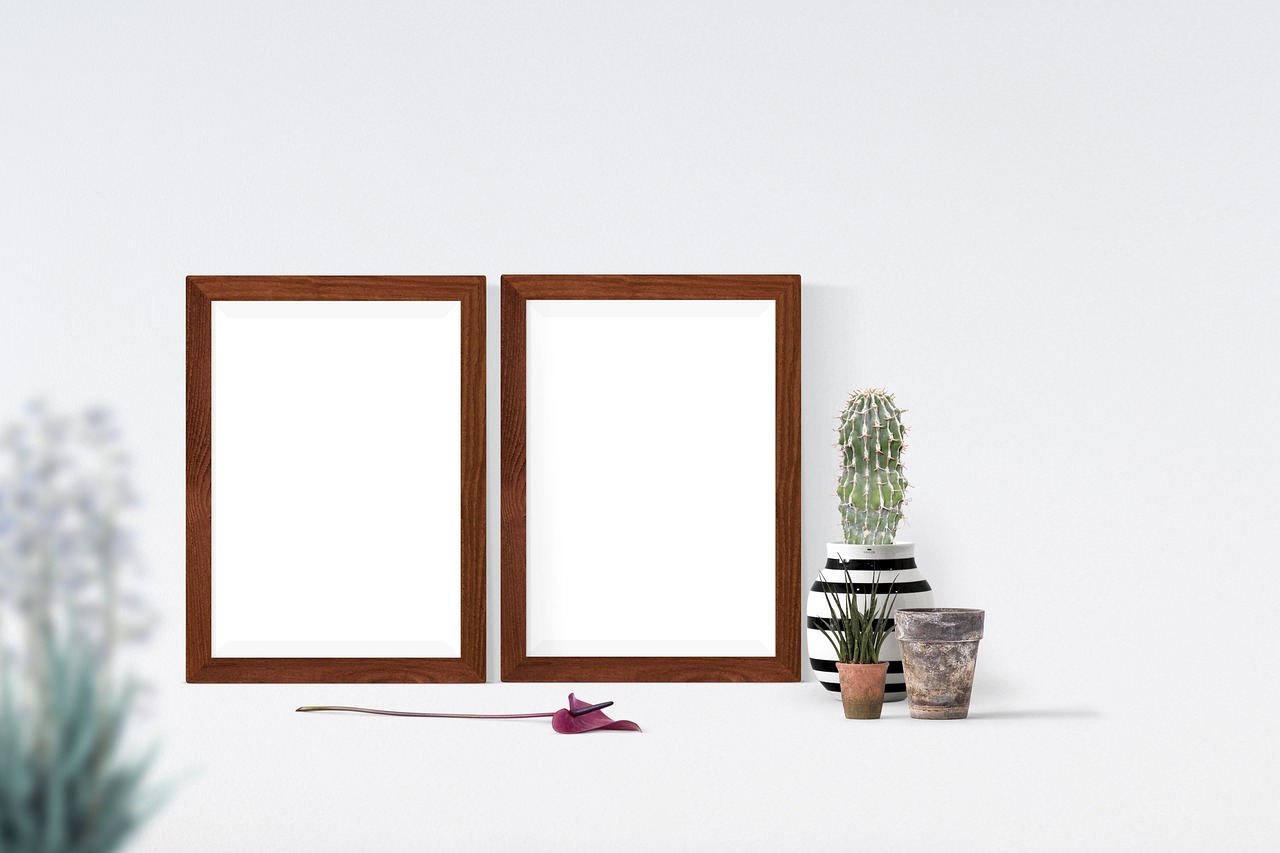
Lighting Your Gallery Wall
When it comes to showcasing your stunning gallery wall, lighting plays a pivotal role in transforming the overall ambiance of your space. Imagine walking into a room where your carefully curated art pieces are illuminated just right, drawing the eye and sparking conversation. Proper lighting can make your artwork pop, highlighting the colors, textures, and details that might otherwise go unnoticed in the shadows.
First and foremost, consider the type of lighting you want to use. There are several options available, each offering a unique effect:
- Wall Sconces: These fixtures can be mounted on the wall, providing a warm glow that enhances the atmosphere without overpowering the artwork.
- Spotlights: Adjustable spotlights can be directed precisely at specific pieces, creating a dramatic effect while making your favorite artworks the stars of the show.
- Picture Lights: These are designed specifically for illuminating artwork and can be installed above or below the frame, casting a flattering light on your pieces.
- LED Strip Lights: These can be placed behind frames or along shelves to create a subtle glow that adds depth and dimension to your gallery wall.
Additionally, think about the color temperature of your lighting. Warmer tones (around 2700K to 3000K) create a cozy atmosphere, while cooler tones (above 4000K) can lend a more modern and vibrant feel. Experimenting with different temperatures can help you find the perfect match for your space. You might even consider using dimmers to adjust the brightness based on the time of day or your mood, allowing for versatility in your gallery wall’s presentation.
Don’t forget about the positioning of your lights! A common mistake is to place lights too high or too low. Ideally, you want the light to hit the artwork at an angle of around 30 degrees. This not only minimizes glare but also enhances the visual appeal of the pieces. If you're using multiple light sources, try to achieve an even distribution of light across the wall to prevent any dark spots that could detract from the overall display.
Finally, remember that lighting is not just about practicality; it’s also about creating an experience. Think of your gallery wall as a stage, and the lighting as the spotlight that brings it to life. By carefully selecting and positioning your lights, you can create an inviting space that encourages guests to linger and admire your art. So, go ahead and experiment with different lighting styles and setups until you find the perfect combination that showcases your gallery wall in all its glory!
Q: What is the best type of lighting for a gallery wall?
A: The best type of lighting depends on your personal style and the effect you want to achieve. Wall sconces, spotlights, and picture lights are all excellent options for illuminating artwork effectively.
Q: How can I avoid glare on my artwork?
A: Position your lights at a 30-degree angle to the artwork to minimize glare. Also, consider using matte frames and glass to reduce reflections.
Q: Is it necessary to use dimmers for my gallery wall lighting?
A: While not necessary, dimmers can enhance the versatility of your lighting, allowing you to adjust the brightness based on the time of day or your mood.
Q: Can I use natural light for my gallery wall?
A: Natural light can be beautiful, but it can also cause fading over time. If you choose to use natural light, consider using UV-filtering window treatments to protect your artwork.
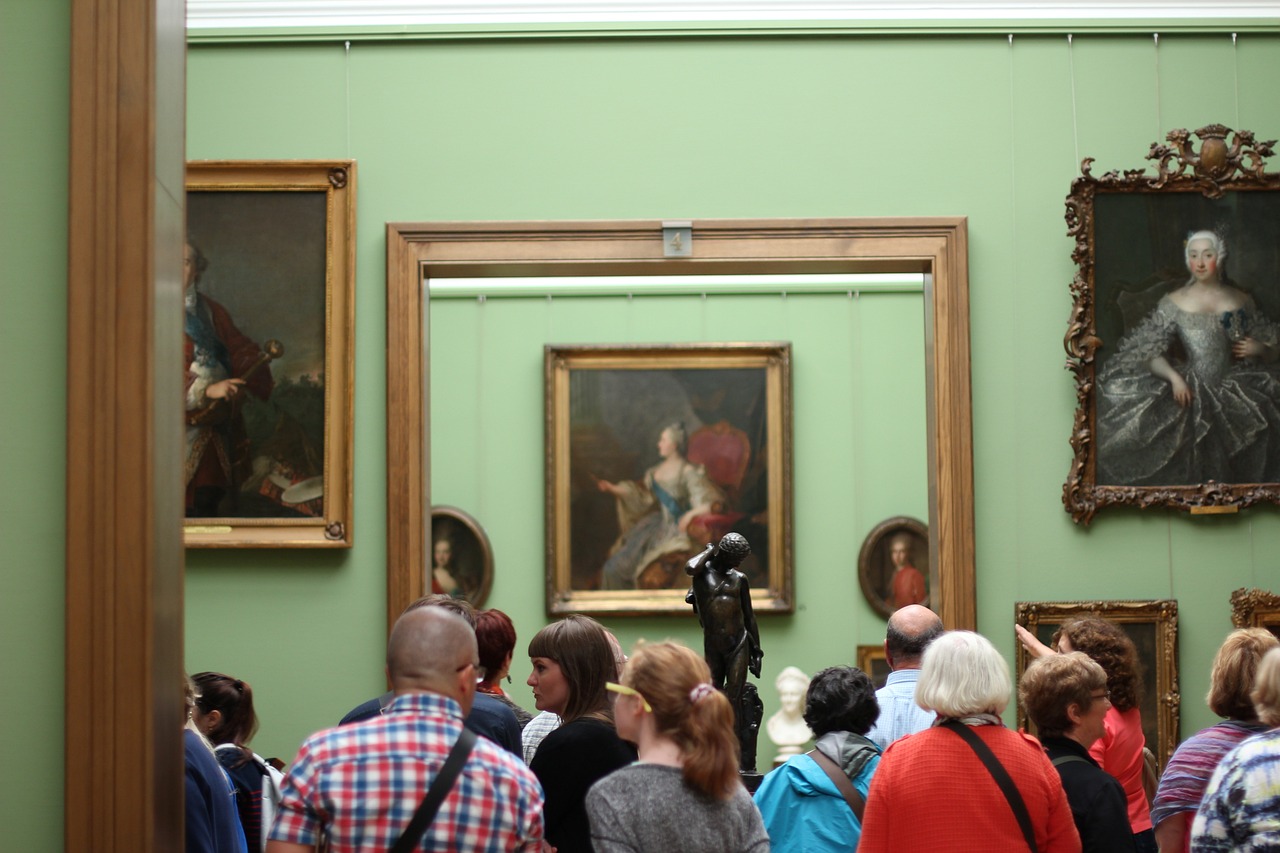
Maintaining Your Gallery Wall
Once you've poured your heart and soul into creating a stunning gallery wall, the last thing you want is for it to become dull or cluttered over time. Maintenance is key to ensuring your gallery wall remains a vibrant reflection of your personality and style. Just like a garden needs tending, your gallery wall requires a bit of love and attention to keep it looking fresh and inviting.
One of the easiest ways to maintain your gallery wall is through diligent dusting. Frames can attract dust and grime, which can detract from the overall aesthetic. Grab a microfiber cloth and gently wipe down each frame, being careful not to scratch the glass. If you have artwork that’s particularly delicate, consider using a soft brush or a can of compressed air to avoid any damage. Regular dusting not only keeps things looking sharp but also prolongs the life of your pieces.
Another important aspect of maintaining your gallery wall is rotating your artwork. Just like a wardrobe, your gallery wall can benefit from a little seasonal change. Every few months, consider swapping out a few pieces with others from your collection. This not only keeps the display feeling fresh but also allows you to showcase different aspects of your personality and interests. If you have personal photos, this is a great time to update them with new memories or milestones.
To ensure your gallery wall remains cohesive and visually appealing, take a moment to assess the arrangement every once in a while. As you add or remove pieces, you may find that the balance has shifted. Step back and look at the overall composition. If something feels off, don’t hesitate to rearrange a few items until you find that sweet spot. Remember, creating art is a dynamic process, and your gallery wall should evolve along with you.
Lastly, consider the lighting of your gallery wall. Over time, the lighting in your space may change due to new furniture or renovations. Make sure your artwork is still well-lit and visible. If necessary, invest in some adjustable wall sconces or picture lights to highlight your favorite pieces. Proper lighting can make a world of difference, enhancing colors and details that might otherwise go unnoticed.
In summary, maintaining your gallery wall is an ongoing journey. With regular dusting, thoughtful rotation of artwork, periodic assessments of arrangement, and proper lighting, you can ensure that your gallery wall remains a stunning focal point in your home. So, roll up your sleeves and give your gallery wall the care it deserves; after all, it’s a reflection of you!
- How often should I dust my gallery wall? It's recommended to dust your gallery wall every 1-2 weeks to keep it looking fresh.
- Can I mix different styles of art? Absolutely! Mixing styles can add depth and character to your gallery wall.
- How do I choose the right lighting for my gallery wall? Consider adjustable wall sconces or picture lights to highlight your favorite pieces effectively.
- Is it okay to use personal photos? Yes, personal photos can create a warm and inviting atmosphere, making your gallery wall uniquely yours.
Frequently Asked Questions
- What is a gallery wall?
A gallery wall is a curated display of artwork, photographs, and decorative items arranged on a wall to create a visually appealing focal point in a room. It's a fantastic way to express your personality and style, especially in small spaces where every inch counts!
- How do I choose the right wall for my gallery?
Choosing the right wall is essential for maximizing the impact of your gallery. Look for a space that has good lighting and visibility, such as a wall in the living room or hallway. Make sure it complements the overall aesthetic of the room and is large enough to accommodate your planned artwork.
- Can I mix different art styles on my gallery wall?
Absolutely! Mixing different art styles can add depth and character to your gallery wall. Feel free to combine contemporary, vintage, and abstract pieces to create a unique and cohesive look that reflects your taste.
- Should I include personal photos in my gallery wall?
Yes! Incorporating personal photographs can create a warm and inviting atmosphere. Choose meaningful images that resonate with you and ensure they blend well with the other artwork for a harmonious display.
- How do I arrange my artwork effectively?
Experimenting with layouts on the floor before committing to nail placement is a great strategy! This allows you to visualize how different pieces work together and helps you achieve a balanced and visually appealing arrangement.
- What accessories can I add to my gallery wall?
Incorporating accessories like shelves, plants, or decorative items can enhance your gallery wall's appeal. These elements add layers and create a more inviting display, making your wall feel dynamic and alive.
- How can I light my gallery wall?
Proper lighting can dramatically enhance the visual impact of your gallery wall. Consider using spotlights or wall sconces to highlight your favorite pieces effectively, creating a stunning ambiance in your space.
- How do I maintain my gallery wall?
Regular maintenance is key to keeping your gallery wall looking fresh. Dust the frames, rotate artwork periodically, and update pieces to ensure your display remains vibrant and engaging over time.



















